The border crossing was just the beginning of numerous pleasant experiences in Bolivia, a country that is quite poor, but rich in culture and natural beauty.
The next pleasant experience was meeting our Bolivian driver/guide, Yoni, who would show us around the Bolivian Altiplano in a Toyota Landcruiser 4×4 for the next 3 days. (I was traveling with 4 other people who booked the same tour, hence “we”). I immediately liked Yoni, because as soon as we set off in our 4×4 across the desert-like expanse of the altiplano, he cranked up the stereo in the landcruiser and began to sing along as spanish hip-hop blasted from the speakers. It was the perfect way to be welcomed to a new country!

We spent the day cruising along the “roads” that traverse the altiplano, moving from one incredibly colored salt lake to the next. We stopped at Laguna Blanca (white), Lagune Verde (green), and Laguna Negro (black), all of which get their colors from different minerals and metals present in their salty waters. The most impressive lake by far though was Laguna Colorada. This massive 23 square mile salt lake is an absolutely stunning red color, and is loaded with thousands upon thousands of flamingoes that feed on the micro-algea that gives the lake its red color.

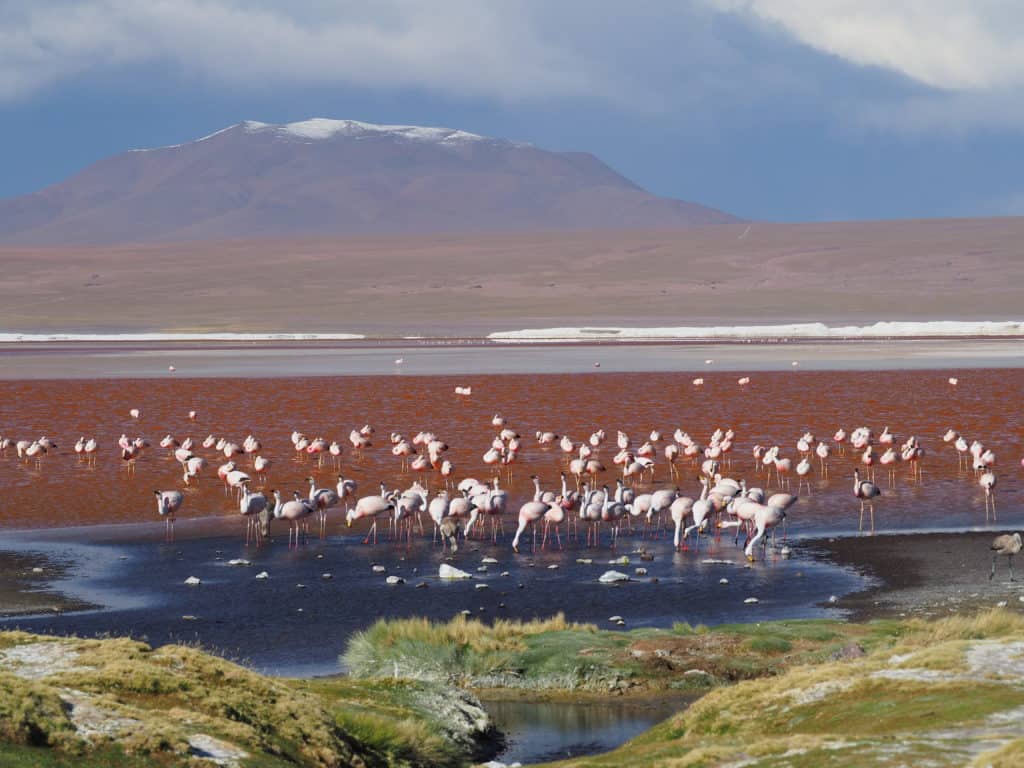
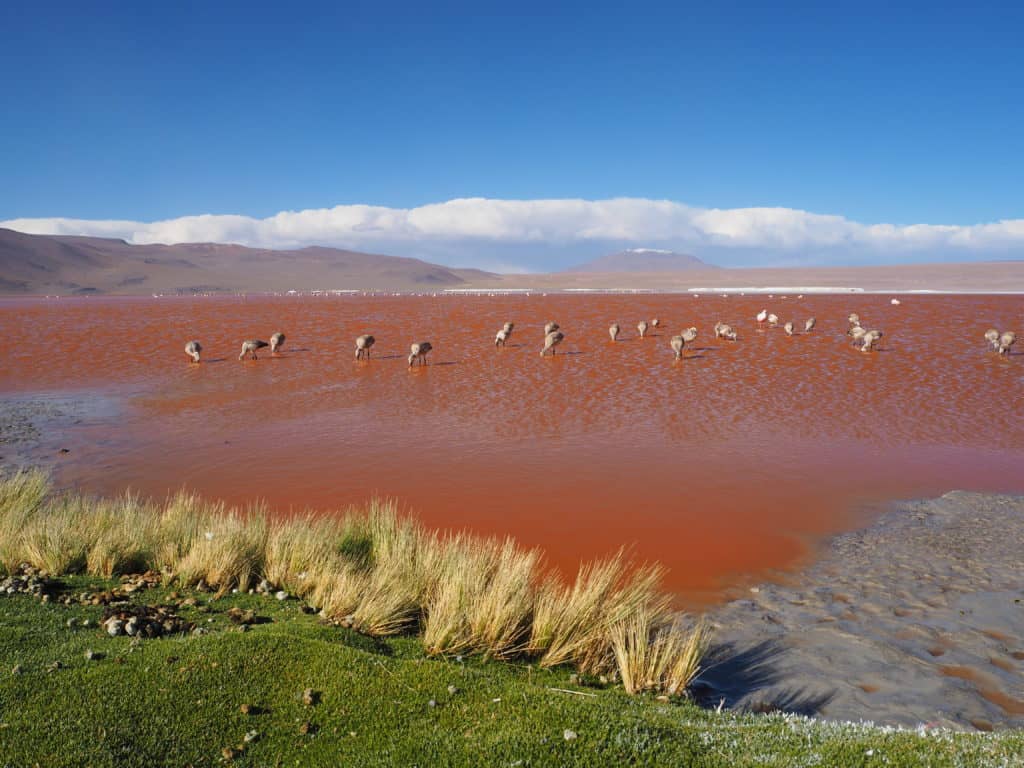
The next day we made our way towards the famous Salar de Uyuni, the worlds largest salt flat. Along the way we stopped at a few unique rock formations and the canyon of the anaconda, so named because of its serpentine like shape. The most interesting event on this day though was the flat tire we got along the way. Normally, when you get a flat tire in the middle of the high desert in Bolivia it isn’t exactly a welcome occurrence. However, Yoni proved his worth as a driver and literally had the flat tire replaced within 5 minutes. No joke, it was the fastest roadside tire change I’ve ever seen. Well, technically it wasn’t a roadside tire change because he changed the tire on the road itself, not on the side of the road! To make it even better, he again turned the stereo up and blasted his favorite spanish hip-hop as he changed the tire. I couldn’t help but smile and laugh. Yoni was smiling and laughing too 🙂
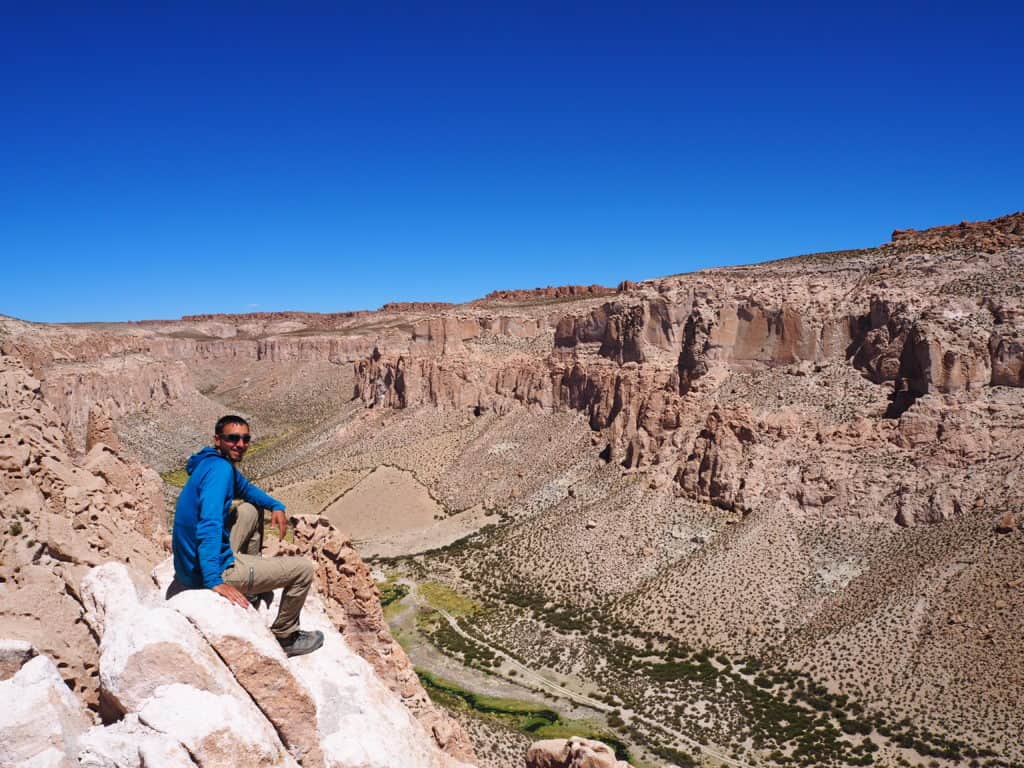

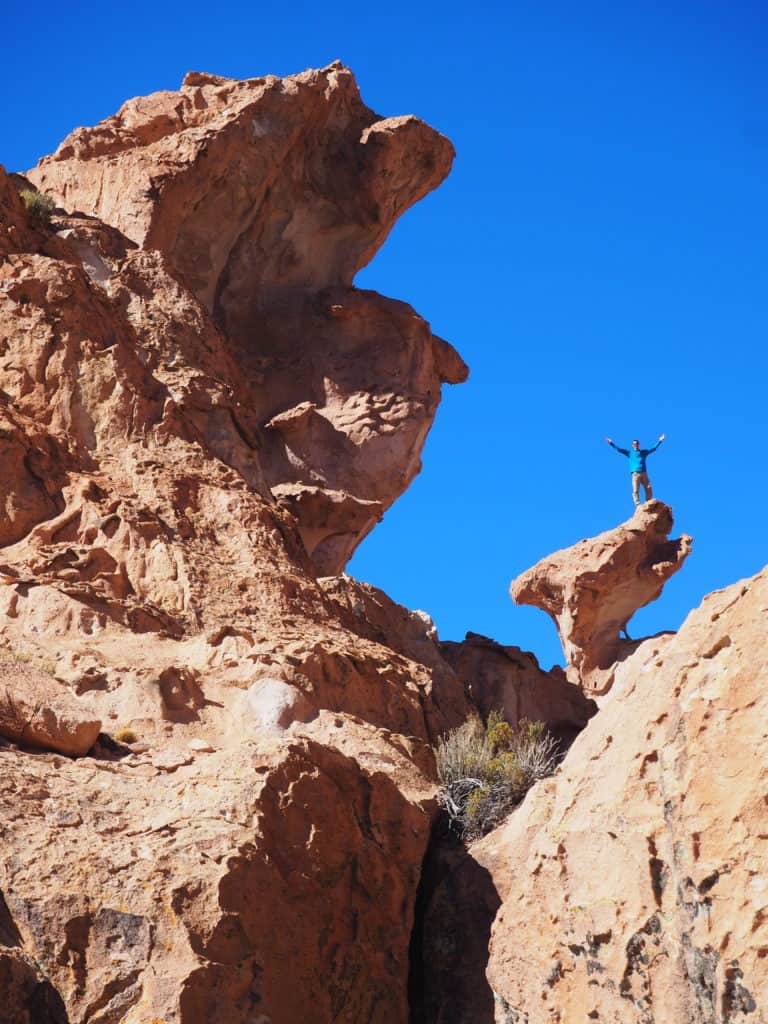



We stayed the night in the town of Uyuni and woke up at 4 a.m. to drive out onto the salt flat for sunrise. The Uyuni salt flat covers an area of 4,000 square miles (11,000 square kilometers) and is made up entirely of salt!!! It is breathtaking. Never have I ever seen anything so flat and white. Well, maybe Illinois after a snowfall in winter 🙂 Salar de Uyuni was one of the most unique places I’ve watched the sun rise. It was dead silent and brutally cold before the sun rose, then as the rays of light broke free from the surrounding mountains they spread out across the flat expanse of salt creating mirage-like shimmers everywhere. As if the sunrise wasn’t enough, the salt flat holds another trick up its sleeve; optical illusions. Due to its immense flatness and lack of landmarks, it can be hard to determine how far away something actually is. This lends itself quite well to taking some rather interesting pictures as you can see below!



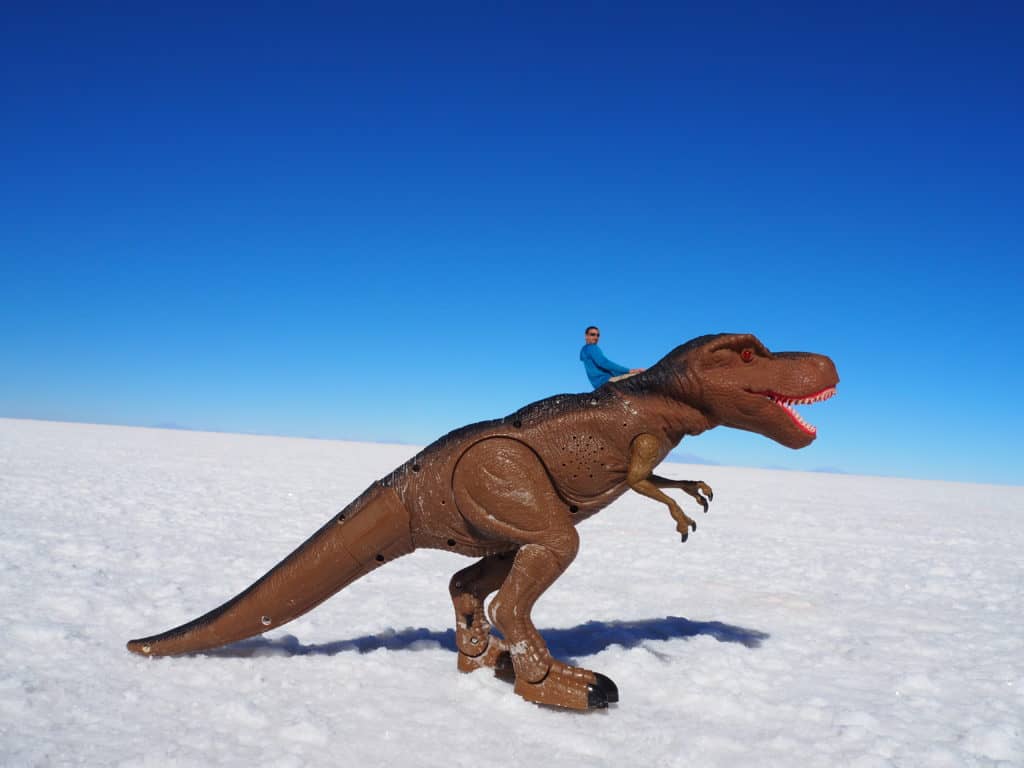
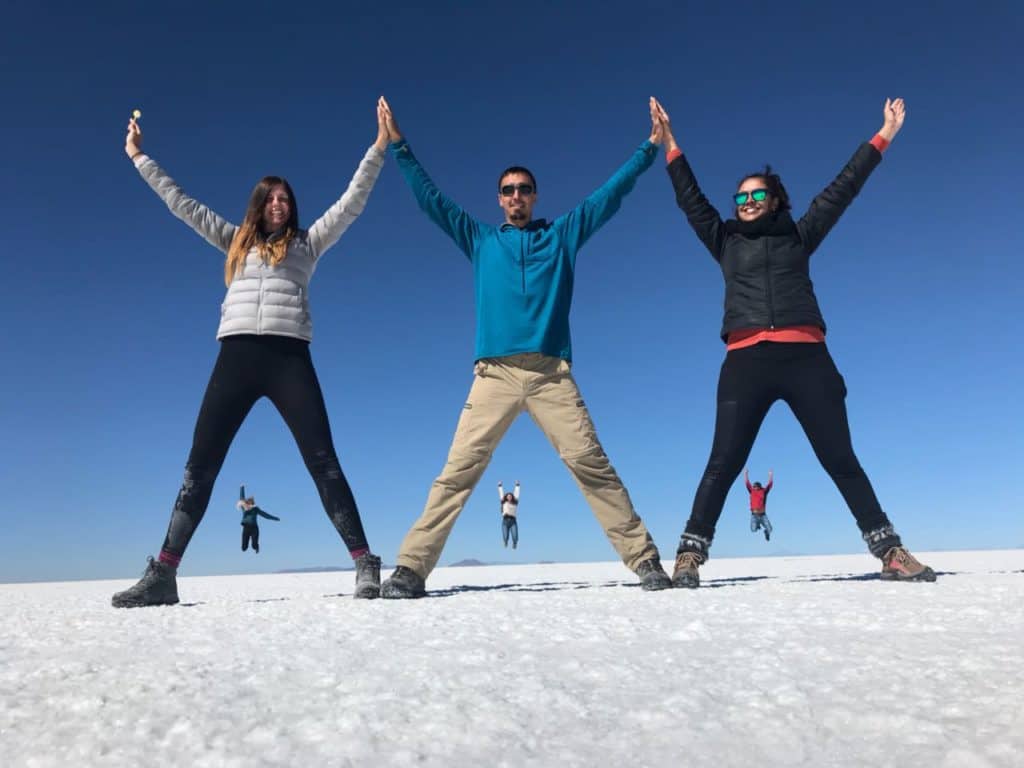
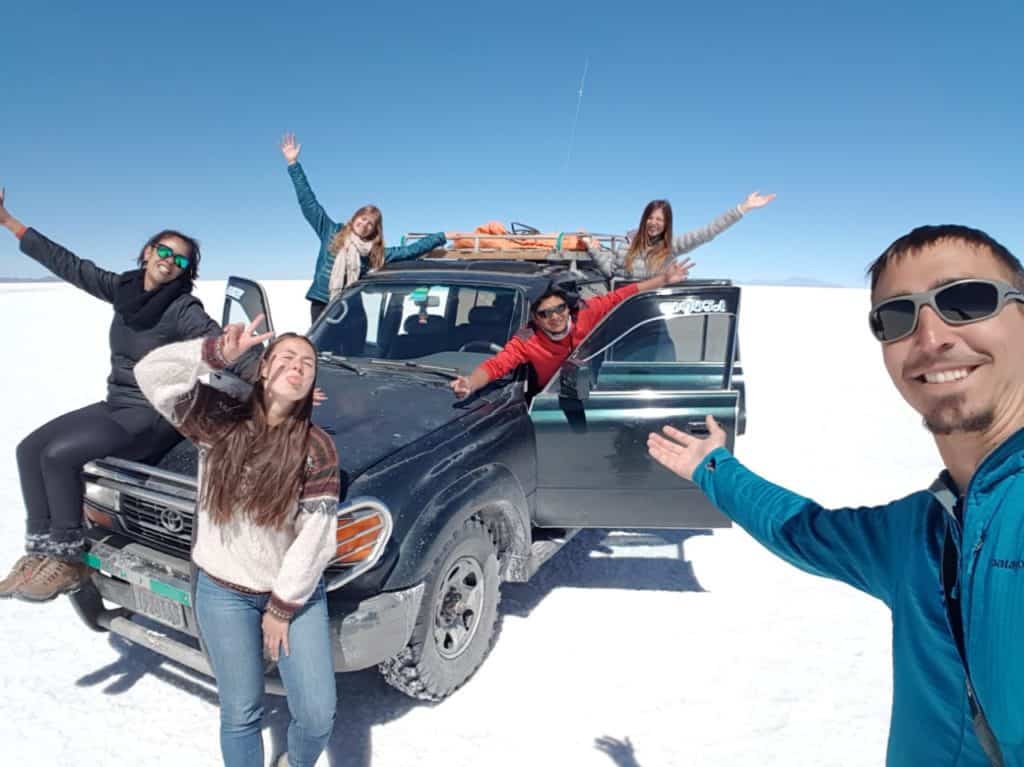
We finished up our day at the Uyuni salt flat by having a traditional lunch back in town. We had ample servings of quinoa (which is grown everywhere on the altiplano of Bolivia), vegetables, and…. wait for it…. Llama. Bolivia is home to 65% of the world’s Llama population, so what better place to eat one then? Was it good you ask? Nope. It tasted like somebody butchered an 85 year old sheep that had spent its life subsisting on discarded rubber tires. But hey, I did name this post “A TASTE of Bolivia!” Nothing ventured, nothing gained.

My next stop in Bolivia was La Paz, the highest capital city in the world with an elevation of 3,650m/12,000ft. If Denver, Colorado is the “mile high city”, perhaps La Paz should be called the “Two mile high city”. Not sure that will catch on though.
I found La Paz to be a very striking city, mainly due to its incredible setting. Situated in a bowl-like depression on the high Bolivian plateau, the city is surrounded by hills and mountains on all sides. Houses rise up on these hills, providing every inhabitant with an amazing view. There is not a single flat street anywhere in the city, and a subway system is an impossibility because of the terrain. Thus, the citizens of La Paz have improvised and set up a public transportation system made up of gondolas. Its the only city I’ve ever been in where gondolas are used as a means of public transport. These people aren’t going skiing, they’re going to work, school, shopping, you name it.

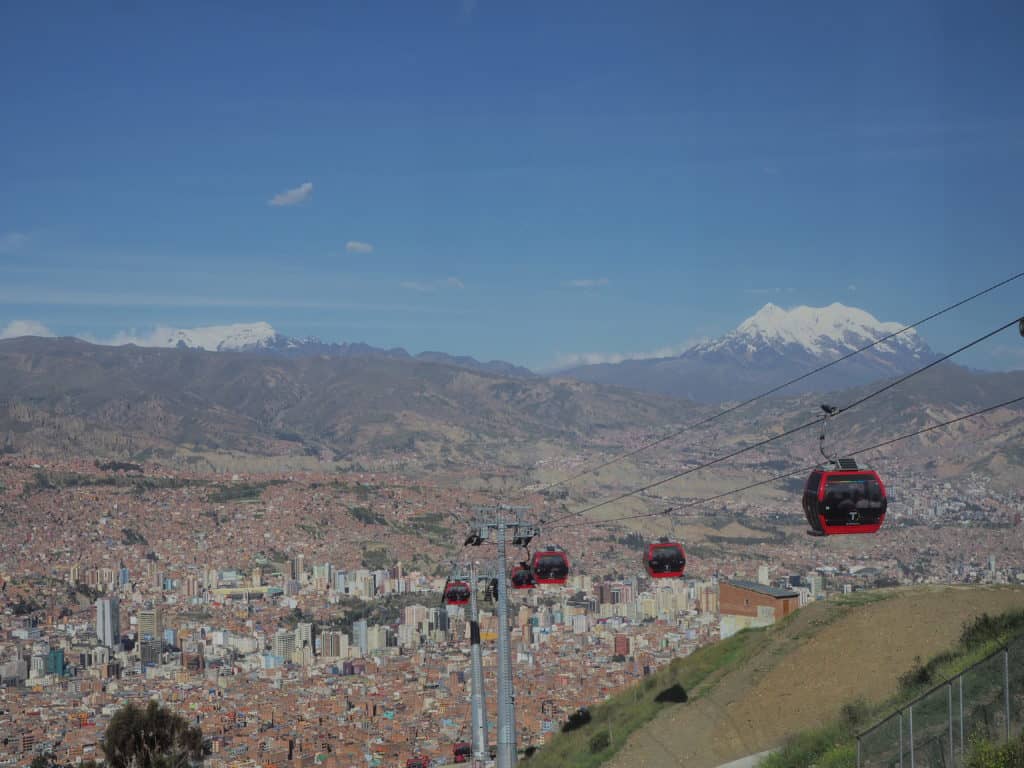
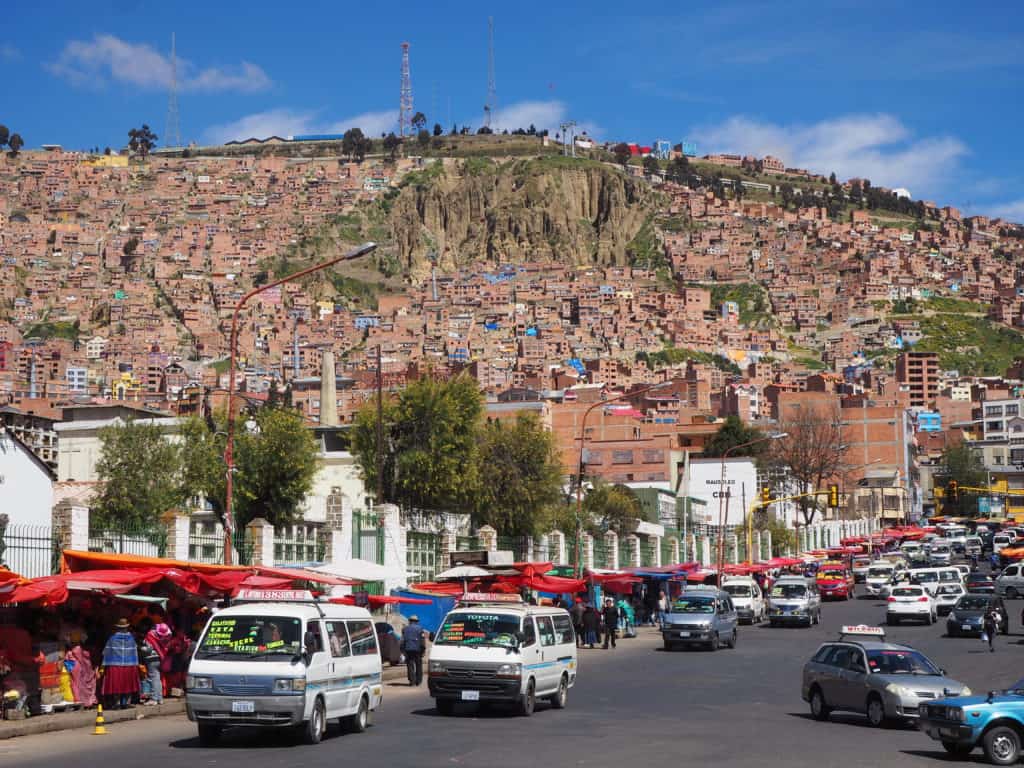
On one of the days I was wandering about in La Paz, I stopped and paid a visit to the witches market. Its less about witches, and more about traditional cures for a million different ailments. However, one thing most certainly stood out in this market. Dried up llama fetuses. These things were hanging everywhere in front of the little store fronts. I learned that it is a tradition in Bolivia to bury a dried up llama fetus in the ground prior to constructing a building. This serves as an offering to Pachamama, the goddess of the earth, an important deity in the pantheon of Andean gods/goddesses.
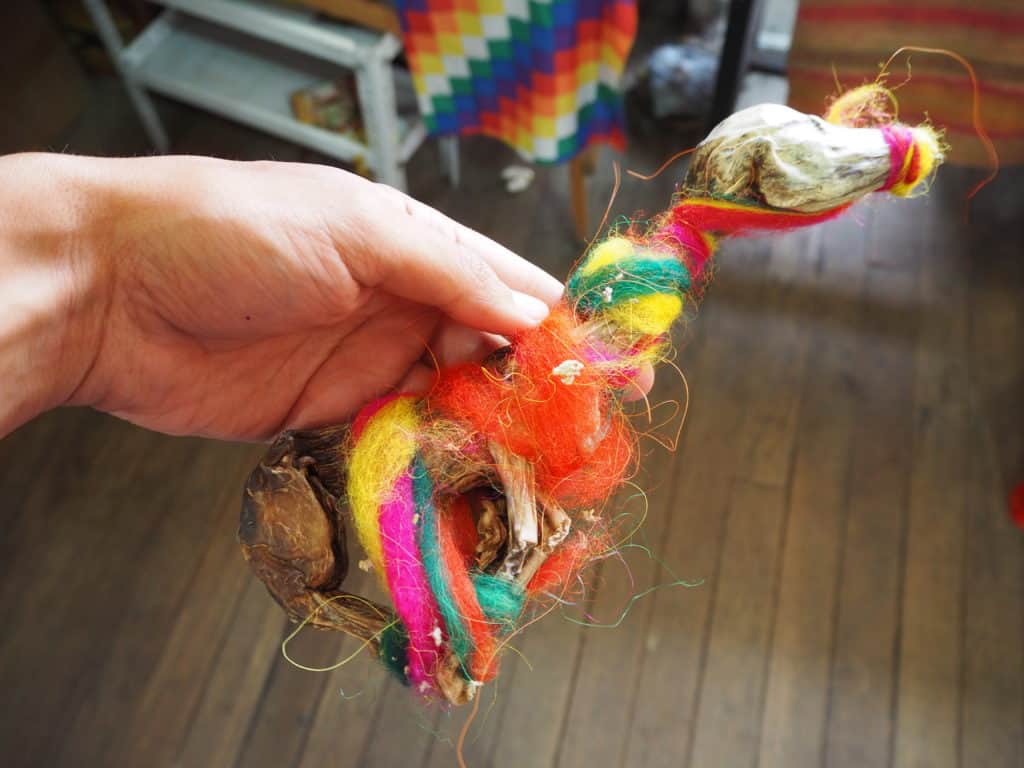
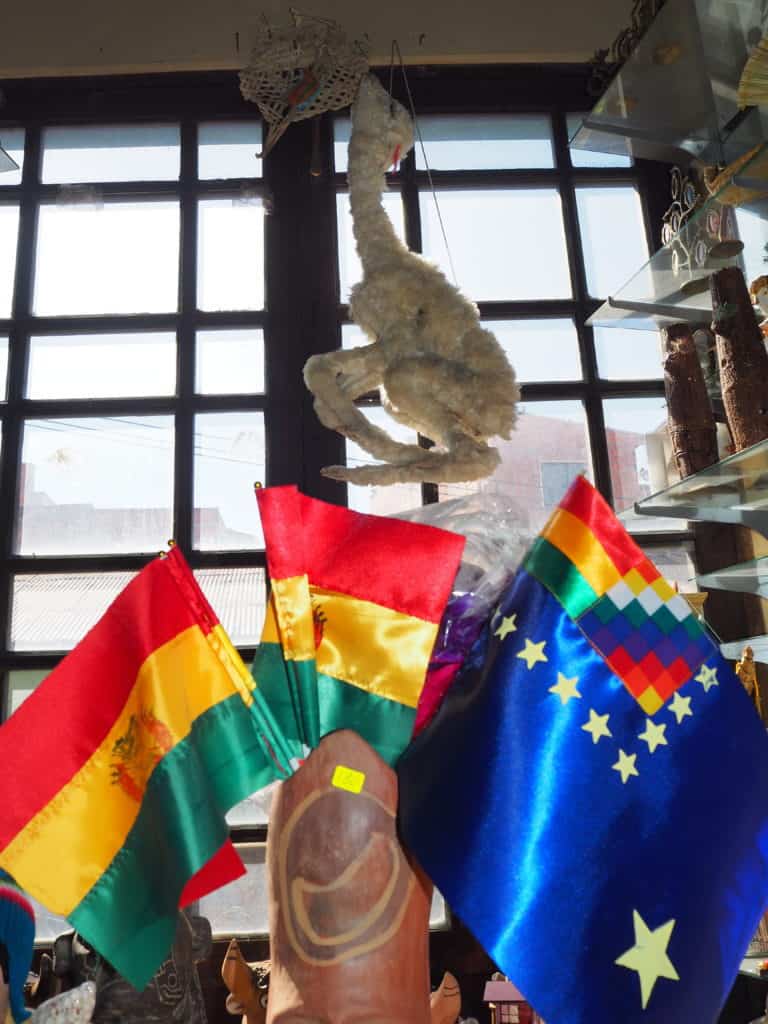
And who could leave out the unique Cholitas wrestling of La Paz? I had heard about this tradition from others prior to arriving in La Paz, so I decided to check it out. Its essentially the same as WWE/WWF wrestling in the U.S. (think scripted/fake wrestling), but the difference is that it is women in traditional Bolivian dress that are doing the fighting. It started out of a protest by Bolivian women against their husbands. They felt like they weren’t being treated well, so they decided to put on wrestling matches to show the men that they were equally strong as them. The women quickly developed a loyal following and the wrestling matches blossomed into the entertainment spectacles they are today. Needless to say, it was a very interesting experience!
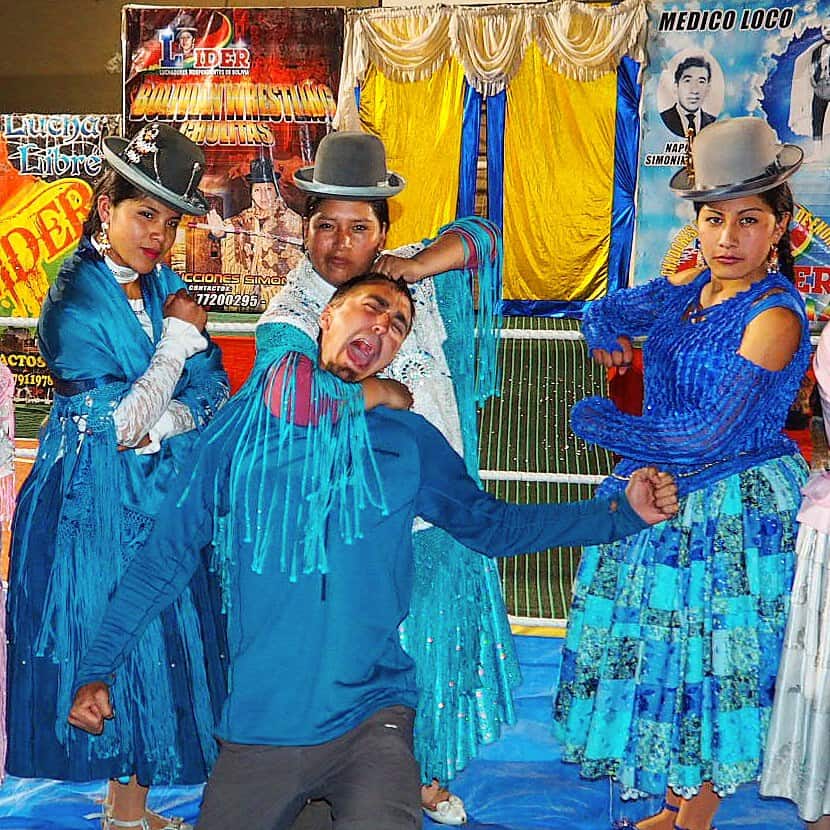
One can’t visit La Paz without experiencing one of the most famous attractions in the area. Bolivia’s Death Road. Cut into the Cordillera Oriental Mountain chain in the 1930s by Paraguayan prisoners during the Chaco War, this road has a notorious reputation. Thousands of Paraguayan prisoners of war lost their lives building the road, and an average of 300 travelers perished every year until 2006, when a new, safer road was built. Now, you can bike down the original death road, starting in the cold altiplano at an elevation of 4,650m/15,260ft and descending down into the Bolivian jungle to an elevation of 1,200m/3,900ft. All while traversing a gravel road roughly 3m/10 ft wide, with few guardrails and cliffs with sheer drop-offs of up to 600m/2000ft. To put it mildly, the views while biking down this road are out of this world. While the road is indeed incredible, it is only dangerous if you don’t know how to ride a bike. It was fairly easy to stay on the path and not end up on the bottom of a cliff 🙂
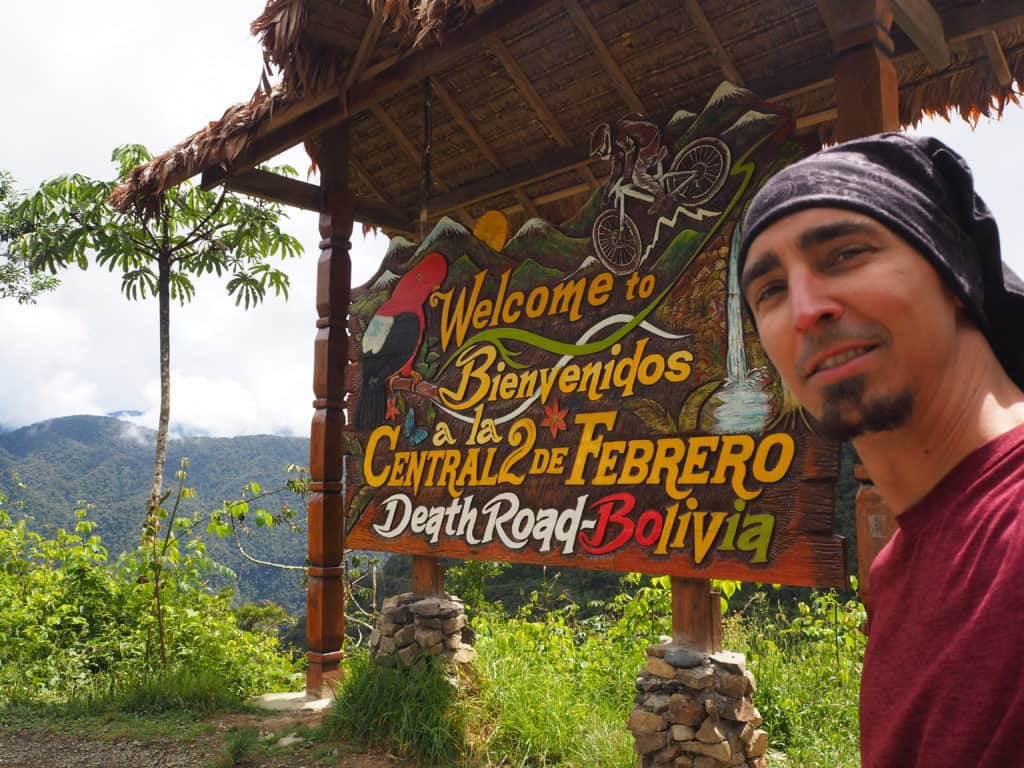
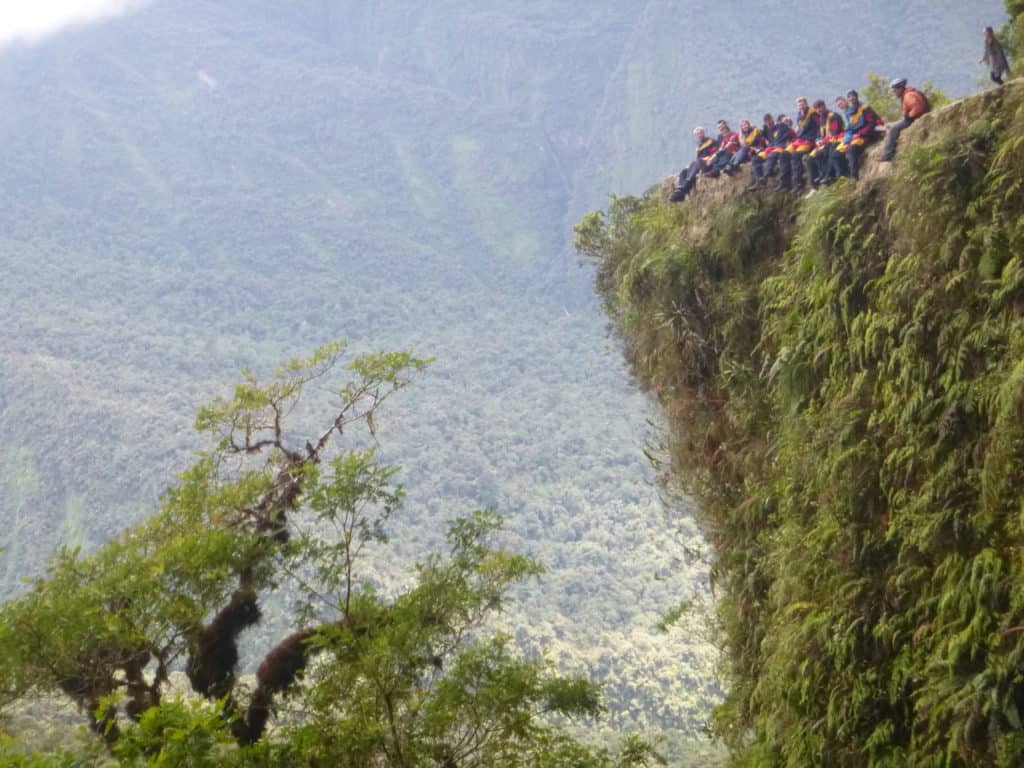
I spent my last two days in Bolivia at the town of Copacabana on the shores of Lake Titicaca, the world’s highest navigable lake at 3,900m/12,600ft. Considered sacred by the Incas, Lake Titicaca is home to Isla del Sol (Island of the Sun), the fabled birthplace of Inti, the Inca Sun God. Most of this island is off limits to visitors to protect the sacred inca ruins, but it nevertheless made for a nice day trip. Copacabana made for a relaxing finish to my time in Bolivia, a land of extreme altitude, full of beautiful landscapes and interesting culture.

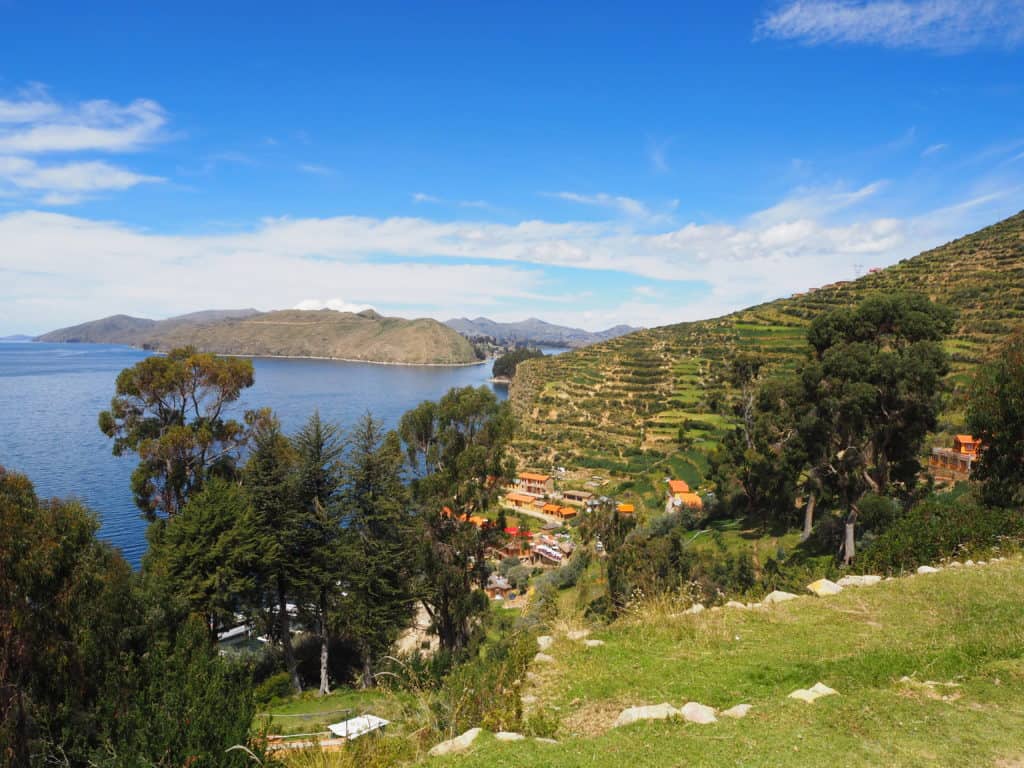
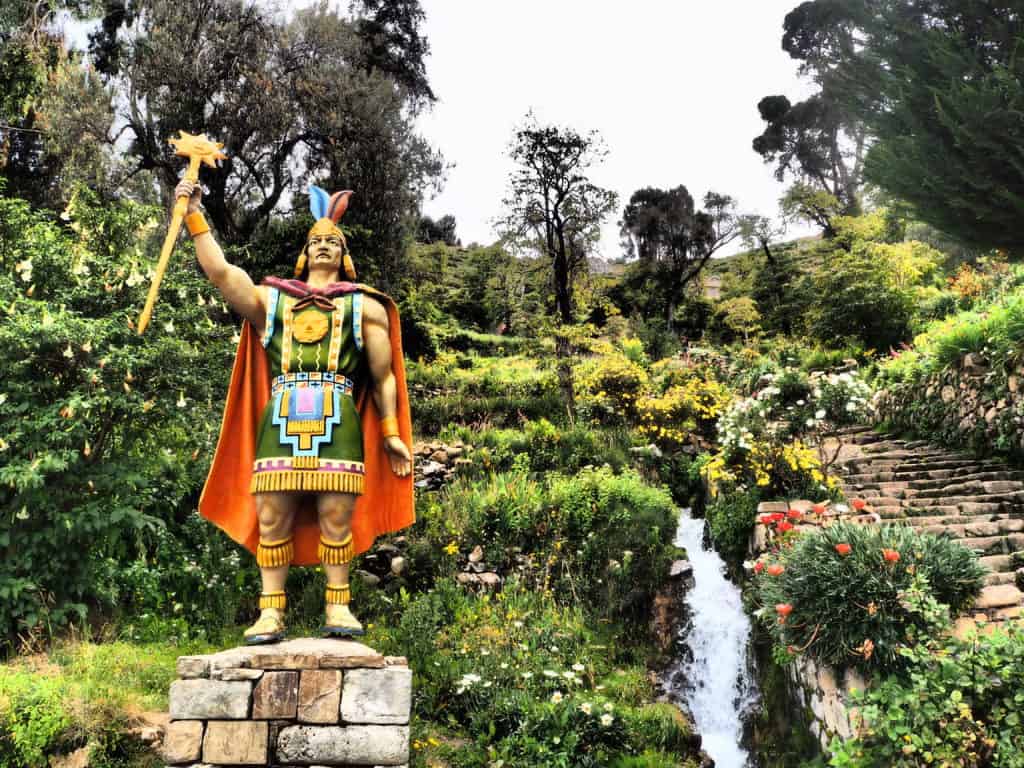

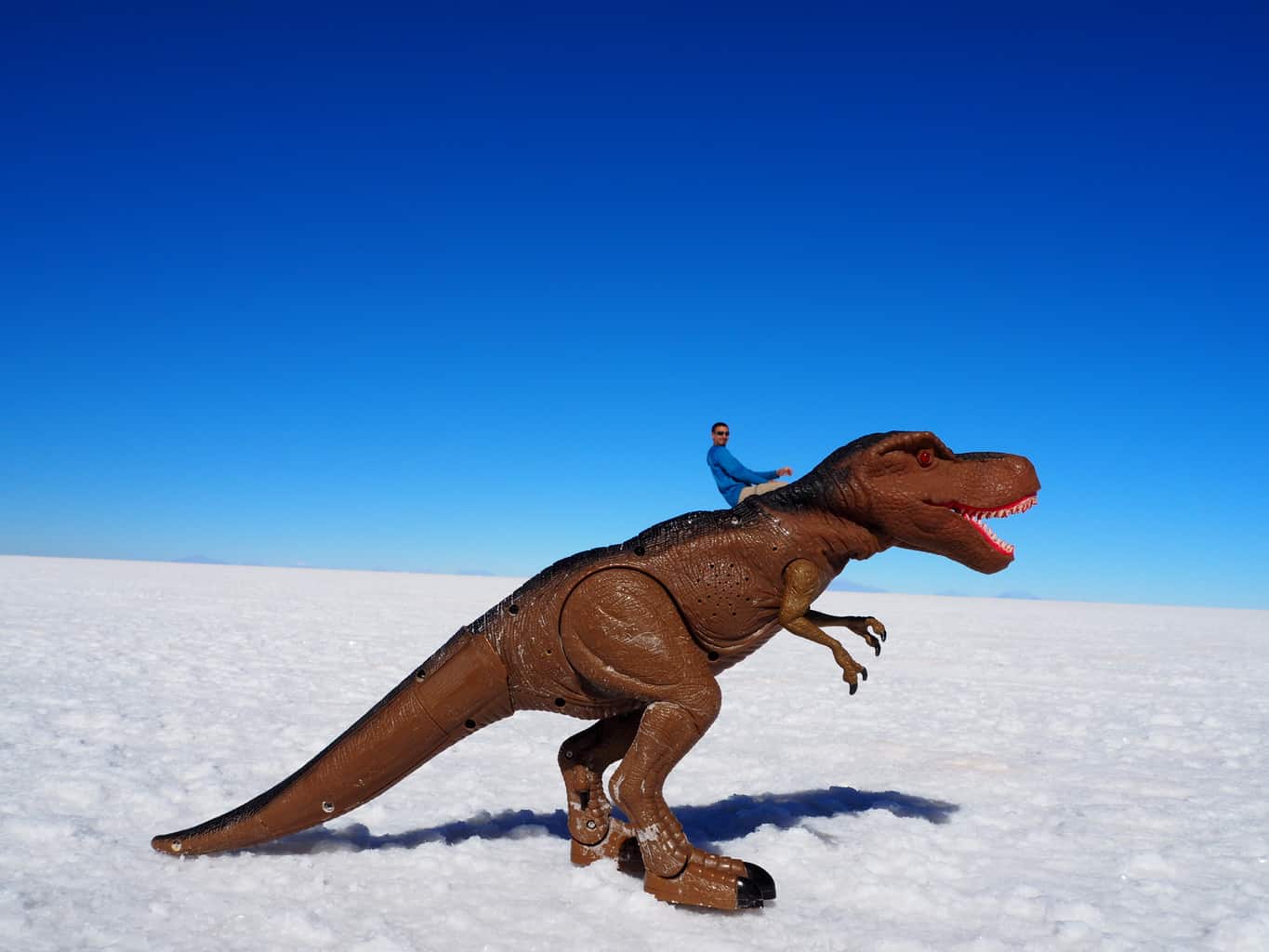


Comments
4 CommentsKaren
Apr 22, 2018Love the jumping photo of you six on the salt flats! Also – that shot of La Paz with the clouds makes me feel like I understand the desire to write magical realism.
Phil Kieser
May 16, 2018I want to read some Karen Kieser penned, La Paz inspired, magical realism!!
David
Apr 30, 2018Phil, I’ve just been catching up on your recent blogs. I am so jealous you are still travelling though was sad to read Kathy wasn’t able to join you for this bit. Seems like you have managed to hit every accessible continent now in your travels over the past year and a bit – I’ve just managed that myself having just come back from a stint in the US and Southern Africa. I can’t believe it was over 14 months ago we were in Laos near the start of our respective travels. I lost your contact details a while back (my travelling phone and sim disappeared somewhere) but it would be great to stay in touch hence me leaving a comment on here. Enjoy your continuing travels and hope you and Kathy can be reunited soon. All the best.
David (of Nobbysbloggy fame)
Phil Kieser
May 16, 2018Hey David!
Yes, crazy how time flies! That was a great trek in Laos, still one of our favorite places. We should definitely stay in touch, my number: +43 677 624 518 03